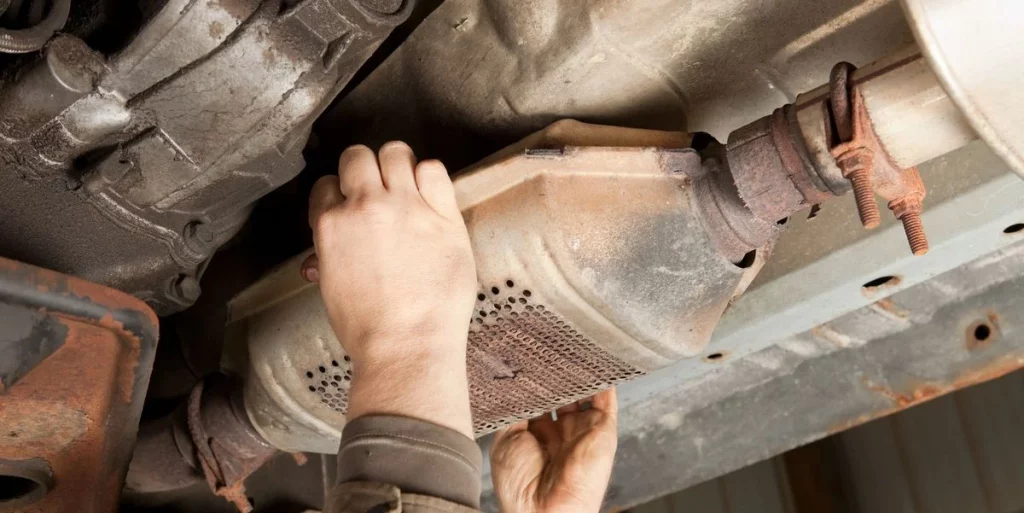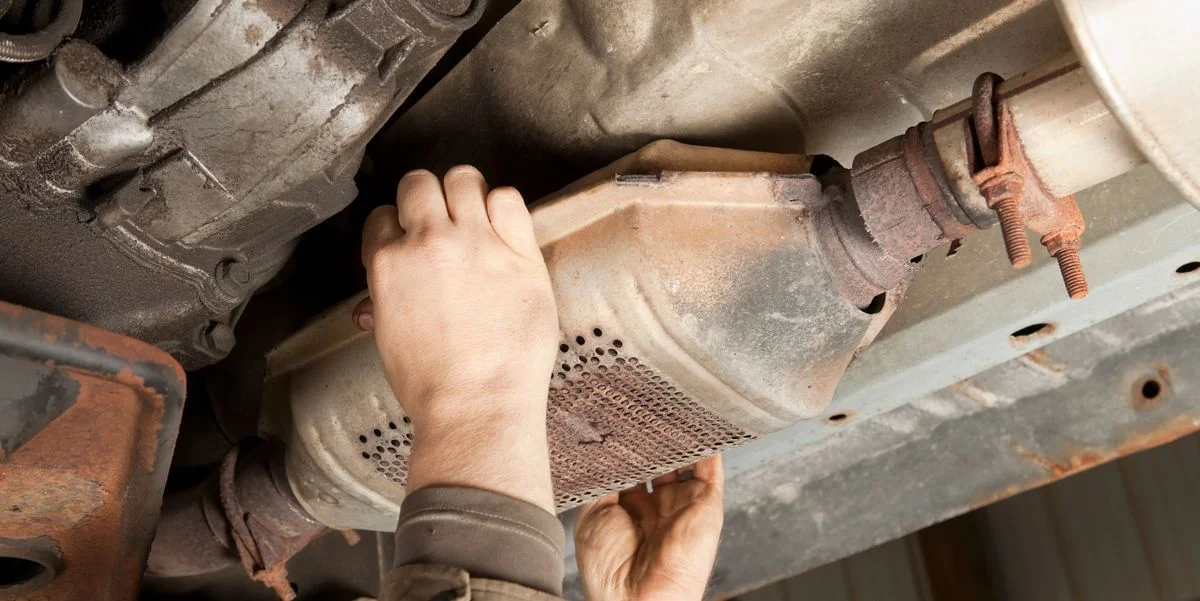
Your car’s exhaust system is a combination of various components and a series of pipes that help transport harmful gases away from the engine.
At the heart of it lies a crucial component known as the catalytic converter, which plays a vital role in reducing emissions and ensuring your vehicle runs efficiently.
However, when this device becomes clogged, it can lead to a range of problems.
In this blog, we’ll dive into the symptoms and causes of a clogged catalytic converter, and provide insight into how to prevent and address this issue.
Symptoms of a Clogged Catalytic Converter
1. Reduced Engine Performance
One of the first signs that your catalytic converter might be clogged is a noticeable decrease in your car’s performance. You may experience sluggish acceleration, reduced power, and an overall lack of responsiveness.
2. Increased Fuel Consumption
A clogged catalytic converter can disrupt the air-fuel mixture in the engine, causing it to run rich. This results in increased fuel consumption and reduced miles per gallon (MPG).
3. Excessive Exhaust Smoke
A clogged converter can cause your vehicle to emit unusual amounts of exhaust smoke, often appearing darker and more pungent. This is a clear indicator that something is amiss with your exhaust system.
4. Engine Overheating
The catalytic converter can become extremely hot when clogged, leading to an overall increase in engine temperature. This can result in overheating and damage to engine components.
5. Trouble Starting the Car
Clogged catalytic converters can affect the overall engine performance, making it challenging to start the car, especially in colder weather. You may experience extended cranking times or difficulty getting the engine to turn over.
6. Dashboard Warning Lights
Most modern vehicles are equipped with onboard diagnostics systems that can detect issues with the catalytic converter. If a problem is detected, your check engine light may illuminate, signaling the need for attention.
Causes of a Clogged Catalytic Converter
1. Accumulation of Carbon Deposits
Over time, carbon deposits from unburned fuel and oil can accumulate within the catalytic converter, obstructing the flow of exhaust gases.
2. Physical Damage
Physical damage to the converter, such as dents, cracks, or punctures, can also lead to clogs. This damage can be caused by road debris or even accidents.
3. Misfires and Rich Fuel Mixtures
Engine misfires and running too rich (an excessive amount of fuel) can result in unburned fuel entering the catalytic converter. This can cause it to overheat and clog.
4. Oil or Coolant Contamination
Leaking oil or coolant can enter the exhaust system, leading to the formation of deposits within the converter. This can significantly impede its performance.
How to Clean a Clogged Catalytic Converter?
Cleaning a clogged catalytic converter can be a challenging task, and it’s often more effective to replace it. However, there are some methods that may help temporarily improve its performance:
- Catalytic Converter Cleaner Additives: There are specialized cleaning additives available in the market that claim to clean catalytic converters. Follow the product instructions carefully, and note that results may vary.
- Highway Driving: Taking your vehicle on a long highway drive at high speeds can sometimes help burn off accumulated deposits in the converter. This is not a guaranteed fix but may provide temporary relief.
- Professional Cleaning: Consult with a professional mechanic or auto shop that specializes in exhaust systems. They may be able to perform a more thorough cleaning or suggest the best course of action.
Prevention and Solutions
- Regular Maintenance: The best way to prevent a clogged catalytic converter is to follow your vehicle’s recommended maintenance schedule. This includes routine oil changes, spark plug replacement, and addressing any engine issues promptly.
- Use Quality Fuel: High-quality fuel can reduce carbon deposits and help keep your catalytic converter clean. Avoid using lower-grade fuels that may contain impurities.
- Drive Responsibly: Aggressive driving, excessive idling, and rapid acceleration can contribute to clogging. Drive responsibly to reduce the strain on your converter.
- Inspect and Repair Your Exhaust System: Routinely inspect your exhaust system for damage or leaks. Address any issues promptly to prevent further complications.
Conclusion
A clogged catalytic converter can have a significant impact on your vehicle’s performance, fuel efficiency, and environmental footprint.
Recognizing the symptoms and addressing the causes of this issue is crucial to keep your car running smoothly.
By practicing proper maintenance and driving habits, you can minimize the risk of a clogged catalytic converter, ensuring a cleaner, more efficient ride for years to come.
